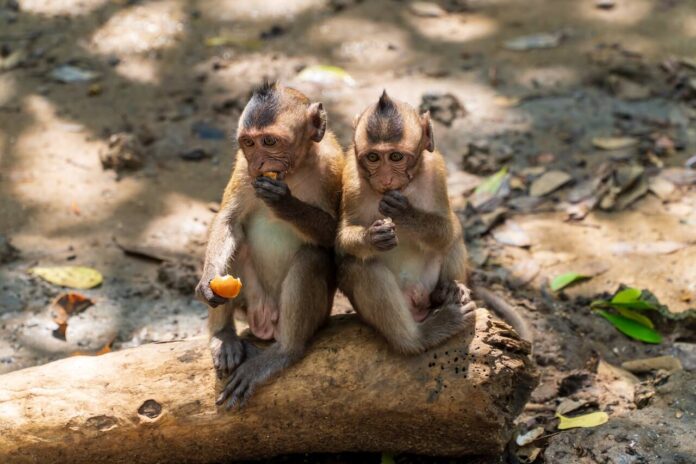The availability and quality of food have a significant impact on the reproductive success of animals. In birds, for example, better food supplementation enhances reproductive performance, while decreased food quantity or quality can lead to delayed gonadal maturation, pair bonding, and smaller clutch size. The circulating levels of hormones such as estradiol, testosterone, and thyroid hormones are affected by food availability in different species. Food deprivation leads to an increase in gonadotropin-inhibiting hormone levels.
Studies have shown decreased gonadotropin levels, oogenesis, spawning, and reduced reproductive performance in fish and lizards. Food availability at different times of the day can differentially affect gonadal development and reproductive performance. Additionally, daily food availability times can lead to a trade-off between offspring quantity and quality in reproduction. Overall, food availability and quality are crucial for successful animal reproduction.
Nutrition plays an important role in animal reproduction, as it provides the nutrients necessary for the growth, development, and maintenance of reproductive tissues and organs. Adequate nutrition is essential for the proper functioning of the reproductive system and for successful reproduction.
Food can influence animal reproduction as follow:
Energy
Adequate energy intake is essential for reproductive success. Insufficient energy can lead to a decrease in reproductive hormone levels and delays in sexual maturation.
Protein
Protein is important for the production of reproductive hormones and the development of reproductive tissues. A deficiency in protein can result in decreased fertility and increased pregnancy loss.
Vitamins and mineral
Certain vitamins and minerals are important for reproductive function, including vitamin A, vitamin E, zinc, and selenium. Deficiencies in these nutrients can lead to fertility problems, poor fetal development, and increased risk of reproductive disorders.
Phytoestrogens
Certain plant compounds, such as phytoestrogens, can have estrogenic effects in animals and affect reproductive function. High levels of phytoestrogens in the diet can lead to fertility problems and altered reproductive behavior.
Toxins
Certain toxins, such as mycotoxins, can be present in animal feed and can affect reproductive function. Exposure to these toxins can lead to reduced fertility, decreased embryo viability, and increased incidence of reproductive disorders.
What scientist says about it
A recent study conducted by Abhilash Prabhat, Amaan Buniyaadi, Sanjay Kumar Bhardwaj, and Vinod Kumar analyzed the differential effects of continuous and intermittent daytime food deprivation periods on metabolism and reproductive performance in diurnal zebra finches. You can read their study here. They discovered some interesting facts.
For examples, in birds and other vertebrates, better food supplementation enhances reproductive performance, while decreased food quantity or quality reduces circulating hormone levels, which can lead to delayed gonadal maturation, pair bonding, the onset of the breeding season, egg-laying latency, and smaller clutch size. In addition, food restriction during early stages can cause delayed sexual maturity and reduced reproductive performance in fishes, rodents, lizards, and other animals. The timing and frequency of food availability can also have an impact on reproductive performance.
Food availability and quality have a significant impact on animal reproduction. This is particularly true for birds, where better food supplementation can enhance reproductive performance, while decreased food quantity or quality can negatively affect different reproductive stages, such as gonadal maturation, pair bonding, and clutch size.
Hormones such as estradiol, testosterone, and thyroid hormones are also affected by food availability in various bird species. Food deprivation, for instance, can lead to an increase in gonadotropin inhibiting hormone levels, affecting reproductive function. Food restriction studies have shown that different species experience decreased gonadotropin levels, oogenesis, spawning, and reduced reproductive performance. Fish and lizards, for example, can experience smaller litter sizes and masses due to food restriction.
Interestingly, food availability at different times of the day can differentially affect gonadal development and reproductive performance. For instance, the food availability for five hours in the evening, but not in the morning, of a 16-hour long day can reduce testicular growth in blackheaded buntings and house sparrows.
Moreover, daily food availability times can lead to a trade-off between offspring quantity and quality in reproduction. Recent studies in zebra finches, for instance, showed that birds held in an equinox 12-hour photoperiod for about one year and fed for only four hours in the morning showed compromised offspring quality, such as reduced skeletal growth.
As you can see now, food availability and quality are crucial for successful animal reproduction. So, by understanding the effects of food on reproductive function in different species, we can better manage and conserve wildlife populations.

